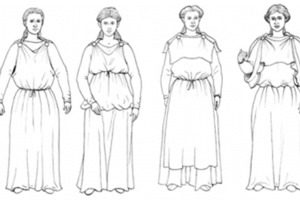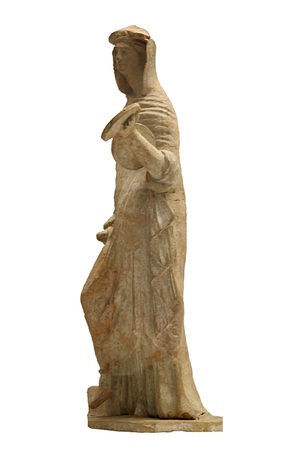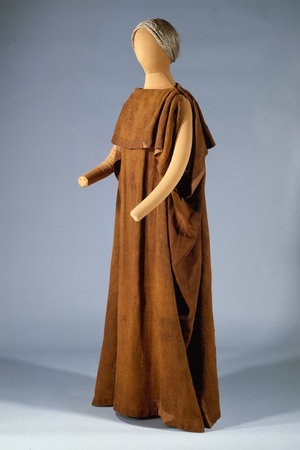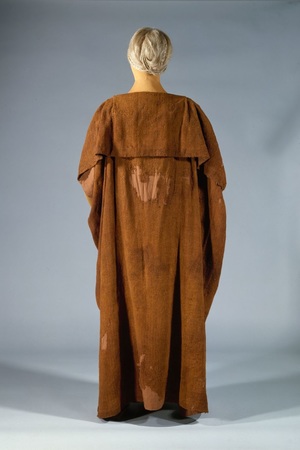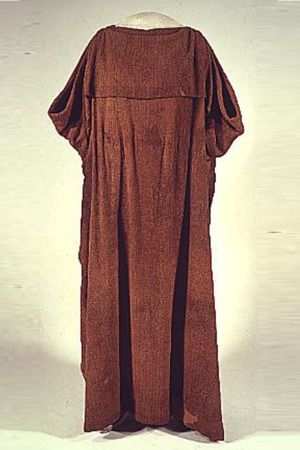Peplos
Peplos, peplon, or peplum (ancient Greek. πέπλος, πέπλον, lat. peplum, literally "veil") - ancient Greek women's upper clothing made of thin fabric, sleeveless, worn over a tunic. The peplum is longer than the chiton, with a large number of folds; the right side is not stitched, in turn, the unstitched edges of the fabric are trimmed with braid.
Roman women wore the peplos until the 2nd century BC, when it was replaced by the fashionable palla - women's clothing in the form of a square or rectangular blanket, sometimes decorated with embroidery. Similar clothes were worn by the Celts, but made of fabrics of other weaves and colors.
Peplos among the ancient Greeks
In Homer, the word peplos denotes a long dress that reached the ground, was worn on a naked body, and left one side open. The hands were also left open, which is why the Greeks began to be called "white-handed" (Greek. λευκώλενοι). The fabric of the peplos was usually bright in color: saffron, bright red, and mixed colors (Greek. ποικίλος πέπλος, "colorful peplos") are mentioned; the peplos was often adorned with embroidery. An essential accessory of the peplos was a belt (Greek. ζώνη).
The removed peplos served as a lining for seats and chariots; a golden urn with the ashes of Hector was wrapped in a purple peplos. In the post-Homeric era, the peplos continued to exist, but was decorated with oriental luxury, against which protests were occasionally voiced from lawmakers. A radical change in fashion occurred, according to Herodotus, in the middle of the 6th century BC, when Ionian styles came into use. Herodotus's testimony is confirmed by the found ceramics: on vases with black figures (archaic style), the peplos is a common outfit, on vases from the transitional era (mid-6th century BC), archaic clothing is found in combination with Ionian, on vases with red figures the archaic peplos no longer occurs.
In the new era (from the 5th century BC), the word peplos lost its original meaning and came to mean clothing in general; only when mentioning the clothing of heroes, gods, and singers on stage, as well as the goddess Athena, did the archaic meaning of the word persist. The peplos of the goddess Athena was paraded around the city to the temple of the goddess during the Panathenaea every year; like a sail, it was attached to the masts of the sacred ship and displayed to the entire people. Under the guidance of the goddess's priestesses, special weavers worked on its manufacture, decorating the outfit with a patterned pattern that depicted the battle of the gods with the giants, in which Athena herself participated.
Peplos among the Celts
In antiquity, clothing similar to the peplos was common among all the peoples of Europe. The Celts, living in a harsher climate, made peplos only from wool, which was coarser and warmer. There is no known Celtic name for this type of clothing, however, a dress has been found that corresponds to the construction of the Greek peplos - this is the Huldremose dress, Denmark (Huldremose). Its length is 168 cm, and the width (half circumference) is 132 cm. The Huldremose dress was woven in the form of a tube that wrapped around a woman's body and was pinned on the shoulders with two fibulae. The excesses of wide fabric gathered at the chest, forming a peculiar neckline that did not press on the neck, and also hung down the sides, not hindering the movement of the arms.
